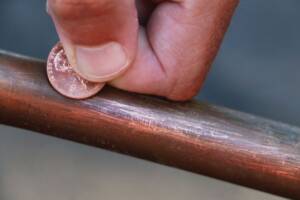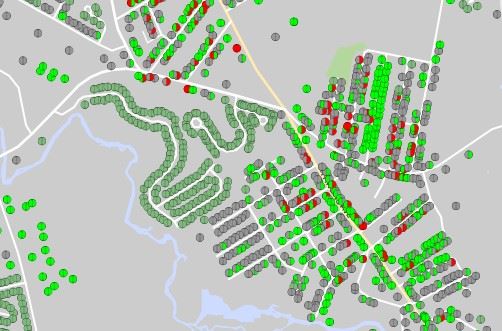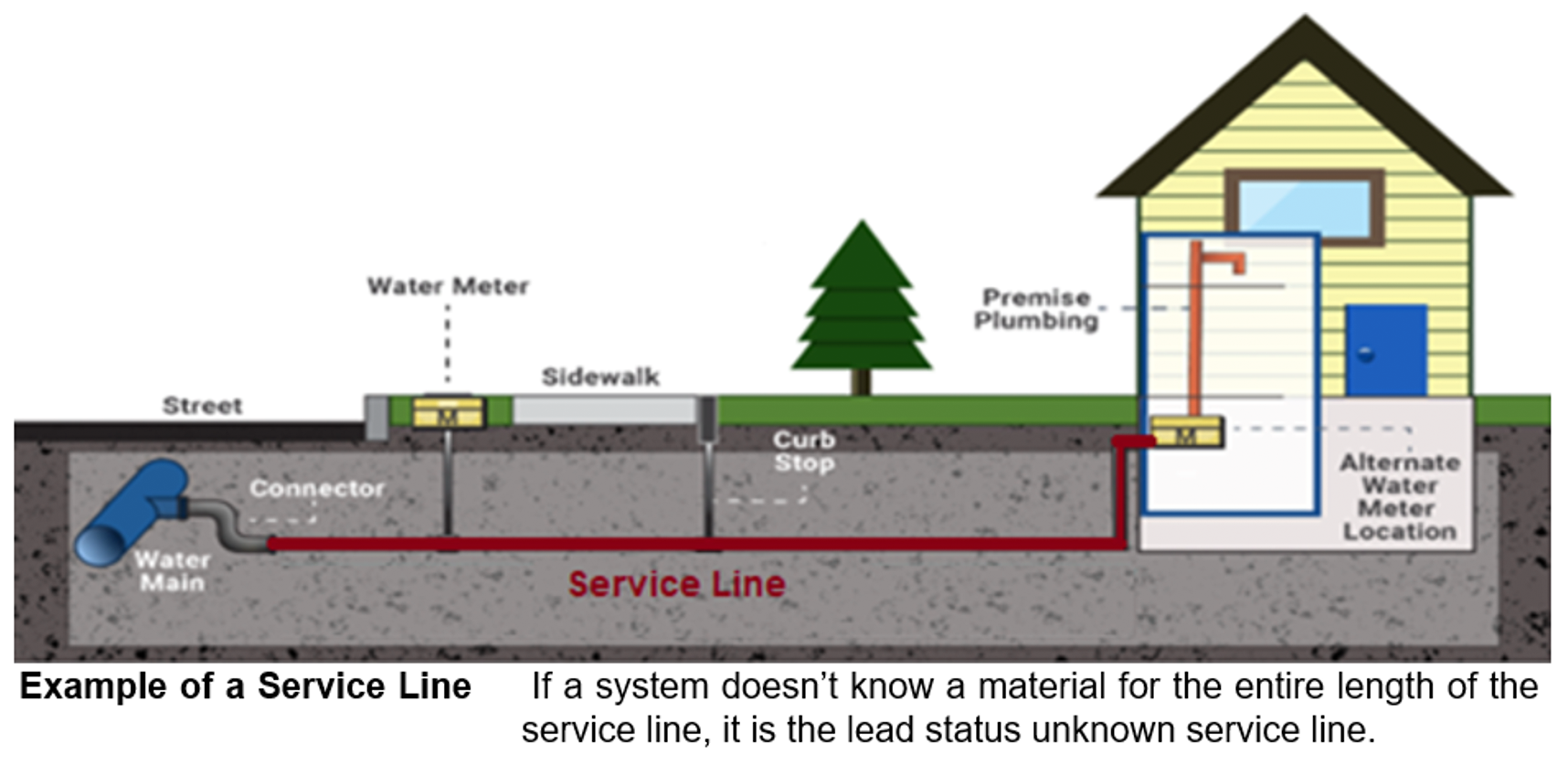The Clifton Park Water Authority is proud to service your property with potable water that meets all drinking water standards as determined by the Environmental Protection Agency(EPA) and the New York State Department of Health(DOH).
In order to serve you better, and meet regulations by the EPA and DOH we are required to obtain an inventory of all service line material to any structure we serve. This is in response to the EPA Revised Lead and Copper Rule to determine if lead service lines are in our system and develop a plan to replace all lead service lines.
CPWA is not aware of any lead services, but we are required to obtain an inventory to prove that no lead services exist within our system. Water provided by the CPWA does not contain lead. Lead is introduced to the water system through individual service lines between the water main and the structure. In order to complete this task we are asking residents to click the link below from any mobile device to properly inventory their service line, take a picture of their service line before the water meter and send the picture to
| Identify Your Water Service Line Material - Service Line Inventory Form | Map of Water Service Lines (Link coming soon) |
 |
 |
Please understand that we are not aware of any lead service lines and are obtaining this inventory to meet regulations and ensure all residents are safe from lead within our operating system.
IMPORTANT INFORMATION:
YOUR DRINKING WATER SERVICE LINE STATUS IS UNKNOWN
The Clifton Park Water Authority is required by the EPA to inventory all water service lines. Your service line material has not yet been identified. The Clifton Park Water Authority is unaware of any lead service lines within the CPWA service area. EPA requires all unknown services to be inventoried as lead until such time as the line can be proven to be another material. If you are receiving this letter, CPWA does not know the material of your water service line.
What is a Lead Status Unknown Service Line?
A service line is the pipe connecting the water main to the building. A typical configuration of a service line is shown on the following page. Our system owns the service line from the water main (in the road) to the curb stop (water valve). Property owners own the service line from the curb stop to the building. When any section of the service line material is unknown, EPA requires us to categorize it as a lead status unknown.
What Does It Mean?
We don’t know what your service line or portion of it is made of. Until we can confirm that the entire length of your service line is not made of lead, we will continue to provide information about lead in drinking water once a year, so you can take precautionary measures to minimize your potential exposure to lead in drinking water.

Opportunities to Verify Your Service Line Material
The Clifton Park Water Authority has a list of all known properties with water services. To verify if your service is non-lead or lead you can send a picture of the service pipe before the water meter, or call and schedule an inspection of your service line, please see attached brochure on how to determine your service line material.
We are also responsible for maintaining an inventory of all service lines, so keep us updated if your service line changes.
For more information on lead in drinking water, contact your health department at the Glens Falls District Office, 518-793-3893.
Source of Lead in Drinking Water
Lead enters drinking water from a lead service line and indoor plumbing materials such as lead solder on copper pipes and chrome-plated brass or brass fixtures and faucets. At this time the Clifton Park Water Authority is not aware of any lead service lines.
Health Effects of Lead
*Exposure to lead in drinking water can cause serious health effects in all age groups. Infants and children can have decreases in IQ and attention span. Lead exposure can lead to new learning and behavior problems or exacerbate existing learning and behavior problems. The children of women who are exposed to lead before or during pregnancy can have increased risk of these adverse health effects. Adults can have increased risks of heart disease, high blood pressure, kidney or nervous system problems.*
Steps You Can Take to Reduce Your Exposure to Lead in Drinking Water
- Use your filter properly. Using a filter can reduce lead in drinking water. If you use a filter, it should be certified to remove lead. Read any directions provided with the filter to learn how to properly install, maintain, and use your cartridge and when to replace it. Using the cartridge after it has expired can make it less effective at removing lead. Do not run hot water through the filter. For more information on facts and advice on home water filtration systems, visit EPA’s website at https://www.epa.gov/ground-water-and-drinking-water/home-drinking-water-filtration-fact-sheet and EPA’s Consumer Tool for Identifying Drinking Water Filters Certified to Reduce Lead.
- Clean your aerator. Regularly remove and clean your faucet’s screen (also known as an aerator). Sediment, debris, and lead particles can collect in your aerator. If lead particles are caught in the aerator, lead can get into your water.
- Use cold water. Do not use hot water from the tap for drinking, cooking, or making baby formula as lead dissolves more easily into hot water. Boiling water does not remove lead from water.
- Run your water. The more time water has been sitting in your home’s pipes, the more lead it may contain if you have a source of lead. Before drinking, flush your home’s pipes by running the tap, taking a shower, doing laundry, or doing a load of dishes. The amount of time to run the water will depend on the length and diameter of the service line, the amount of plumbing in your home, and if your home has a lead service line or not. Residents may contact CPWA 518-383-1122 or
This email address is being protected from spambots. You need JavaScript enabled to view it. for recommendations about flushing times. - Learn what your service line material is. Contact us at 518-383-1122 or
This email address is being protected from spambots. You need JavaScript enabled to view it. or a licensed plumber to determine if the pipe that connects your home to the water main (called a service line) is made from lead, galvanized, or other materials. To find out about what we are doing to replace lead service lines, please contact us at 518-383-1122 orThis email address is being protected from spambots. You need JavaScript enabled to view it. . Protect Your Tap: A quick check for lead is EPA’s on-line step by step guide to learn how to find lead pipes in your home. - Learn about water service line construction in your neighborhood. Contact us at 518-383-1122 or
This email address is being protected from spambots. You need JavaScript enabled to view it. to find out about any construction or maintenance work that could disturb your service line. If you have a lead service line, construction may cause more lead to be released. - Have your water tested. Contact us at 518-383-1122 or
This email address is being protected from spambots. You need JavaScript enabled to view it. to have your water tested and to learn more about the lead levels in your drinking water.
Get Your Child Tested to Determine Lead Levels in their Blood
Although there is no confirmation of having a lead service line, you may wish to speak with a healthcare provider to see if your child’s blood lead level is elevated and/or if there is a need for blood testing, if you are concerned about potential exposure. For more information on these actions, please visit
https://www.cdc.gov/nceh/lead/advisory/acclpp/actions-blls.htm.
This notice is brought to you by Clifton Park Water Authority
State Water System ID# NY500175
Date: November 14, 2024
